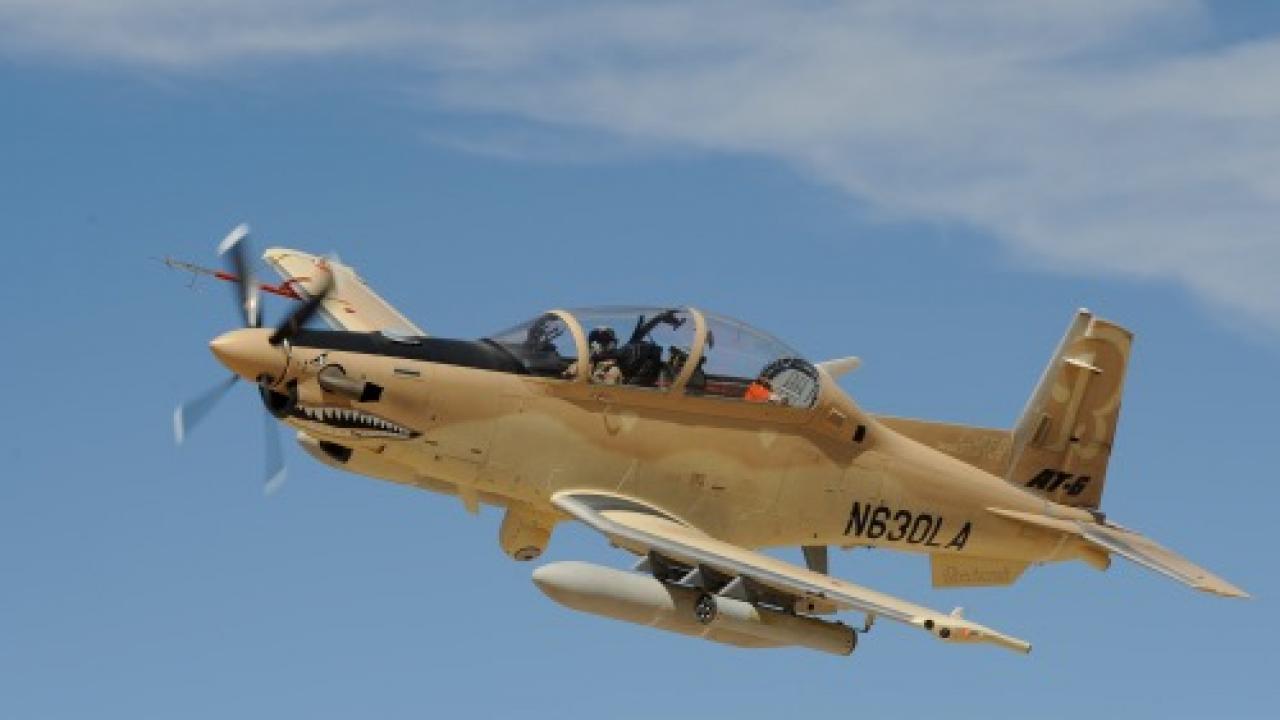Tunisia eyes up latest Wolverine
Tunisia was watching closely as the United States Air Force (USAF) quietly received the first of two Beechcraft AT-6E (Wolverine) light attack aircraft.

Approved for sale: Tunisia has received congressional approval to acquire the Wolverine. Picture: Textron.
Following the low-key ceremony formally recognising that handover in Wichita, Kansas, in February, the USAF and Textron Aviation Defense will now be working together over the next six months to obtain airworthiness certifications for the AT-6E.
Once it has a US military type certificate, it will then be available for export under the direct commercial sales process, or via the foreign military sales (FMS) procedure.
Both Tunisia and Thailand have received congressional approval to acquire the type, and other nations are also understood to be interested in the AT-6E.
The US State Department approved a potential sale of 12 T-6 Texan trainer aircraft to Tunisia in October 2019, and added an approval for four AT-6C Wolverines on February 27 2020.
The USAF, itself, has currently no plans to acquire more than two aircraft, which will be used to support of Air Combat Command’s (ACC) continued light attack experiment (CLAE), exploring the use of such aircraft in countering violent extremist organisations (C-VEO), developing operational tactics, and drawing up standards for exportable, tactical data-sharing networks.
The Wolverine is an armed derivative of the Beechcraft T-6B Texan, optimised for primary weapons training or light attack roles. The T-6 Texan (also known as the Model 3000) is, itself, a US-built derivative of the Pilatus PC-9, extensively modified by Beechcraft to meet the US joint primary aircraft training system (JPATS) requirement in the 1990s.
The aircraft has been built in a number of versions, including the T-6A Texan II for the USAF, US Navy, and Hellenic Air Force, and the armed T-6A NTA with rocket pods, gun pods, and external fuel tanks, for the Hellenic Air Force.
The T-6B for the US Navy incorporated a digital glass cockpit including a head-up display (HUD), six multi-function displays, and hands on throttle and stick (HOTAS) technology, while the T-6C was an upgraded version of the T-6B with underwing hard points, primarily designed for export.
The type has been exported to 11 nations, including Iraq, Israel and Morocco.
Writes Jon Lake.
Stay up to date
Subscribe to the free Times Aerospace newsletter and receive the latest content every week. We'll never share your email address.

